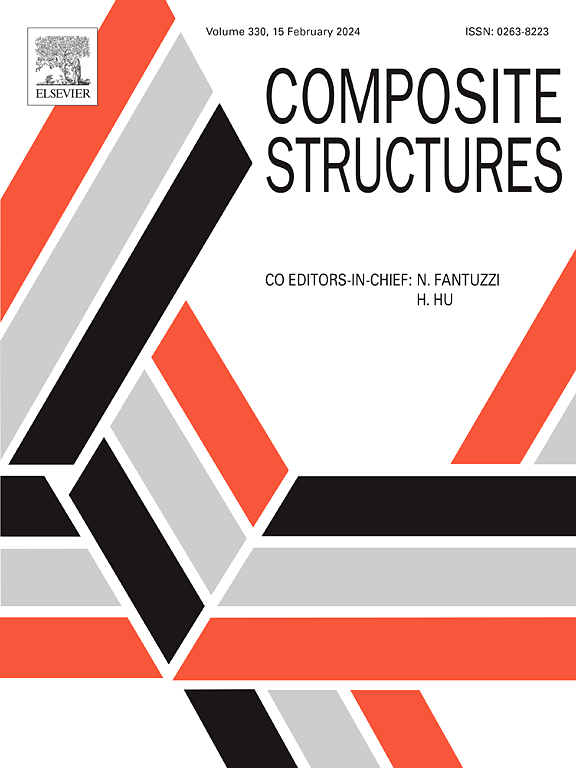A novel gear-based tunable metamaterial for energy absorption and vibration suppression characteristics
IF 6.3
2区 材料科学
Q1 MATERIALS SCIENCE, COMPOSITES
引用次数: 0
Abstract
Actively tunable mechanical metamaterials hold significant promise for applications in active vibration isolation and dynamic property adjustment. This work constructs a continuously steady-state mechanical metamaterial with built-in actively tunable mechanical properties, using micro-gears as the fundamental unit cell. Based on this, the Hashin failure criterion is introduced to simulate the nonlinear deformation and failure behavior of anisotropic metamaterials under uniaxial compression. Furthermore, the energy absorption behavior of gear metamaterials is investigated, discussing the influence of various structural parameters on energy absorption and specific energy absorption performance. Additionally, planetary gear metamaterial unit cell were fabricated using 3D printing, and vibration attenuation tests were designed to evaluate the vibration suppression behavior of the engineered metamaterials. The results indicate that the planetary gear metamaterials exhibit rich nonlinear deformation behavior. The introduction of planetary gears effectively enhances the unit cell’s resistance to deformation and tunability. Metamaterials with a higher number of teeth and smaller modulus demonstrate superior energy absorption performance. At appropriate frequencies, planetary gear metamaterials can achieve vibration control, with their performance positively correlated to the material’s compliance.
一种具有能量吸收和振动抑制特性的新型齿轮可调超材料
主动可调谐机械超材料在主动隔振和动态特性调节方面具有重要的应用前景。本文以微齿轮为基本单元单元,构建了一种具有内建主动可调力学性能的连续稳态机械超材料。在此基础上,引入Hashin破坏准则来模拟各向异性超材料在单轴压缩下的非线性变形和破坏行为。进一步研究了齿轮超材料的吸能性能,讨论了不同结构参数对齿轮超材料吸能性能和比能吸收性能的影响。此外,利用3D打印技术制备了行星齿轮超材料单元格,并设计了振动衰减试验,以评估工程超材料的振动抑制性能。结果表明,行星齿轮超材料具有丰富的非线性变形行为。行星齿轮的引入有效地提高了单元格的抗变形能力和可调性。具有较高齿数和较小模量的超材料具有较好的吸能性能。在适当的频率下,行星齿轮超材料可以实现振动控制,其性能与材料的柔度呈正相关。
本文章由计算机程序翻译,如有差异,请以英文原文为准。
求助全文
约1分钟内获得全文
求助全文
来源期刊

Composite Structures
工程技术-材料科学:复合
CiteScore
12.00
自引率
12.70%
发文量
1246
审稿时长
78 days
期刊介绍:
The past few decades have seen outstanding advances in the use of composite materials in structural applications. There can be little doubt that, within engineering circles, composites have revolutionised traditional design concepts and made possible an unparalleled range of new and exciting possibilities as viable materials for construction. Composite Structures, an International Journal, disseminates knowledge between users, manufacturers, designers and researchers involved in structures or structural components manufactured using composite materials.
The journal publishes papers which contribute to knowledge in the use of composite materials in engineering structures. Papers deal with design, research and development studies, experimental investigations, theoretical analysis and fabrication techniques relevant to the application of composites in load-bearing components for assemblies, ranging from individual components such as plates and shells to complete composite structures.
 求助内容:
求助内容: 应助结果提醒方式:
应助结果提醒方式:


